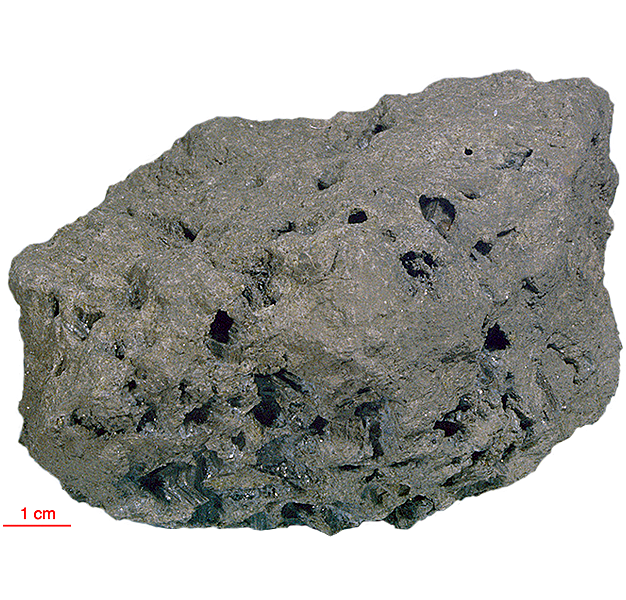
Fact sheet
15495 is a coarse porphyritic mare basalt with about 10% large vugs. Large pyroxene phenocrysts up to 2.5cm long separate regions of melt that crystallised as fine-grained radiate masses of plagioclase (40%) and pyroxene (60%) with a variety of textures. The main accessory minerals are ilmenite, troilite and metallic iron.
The sample weighed 908.9 grams before analysis. It has not been dated.
Further details of this and other Apollo samples are here: http://curator.jsc.nasa.gov/lunar/
The Apollo 15 landing site was in the Apennine Highlands, and close to Hadley Rille — a long, narrow winding valley. Approximately 76 kg of lunar material, including soil, rock, core-tube and deep-core samples, were returned to Earth.
This mission was the first flight of the Lunar Roving Vehicle which allowed the astronauts to venture further from the Lunar Module than in previous missions. During three periods of extravehicular activity, or EVA, on July 31st, and August 1st and 2nd, Scott and Irwin completed a record 18 hours, 37 minutes of exploration, travelling 17.5 miles, in the first car that humans had ever driven on the Moon.
Apollo 15 was launched on 26 July 1971.






